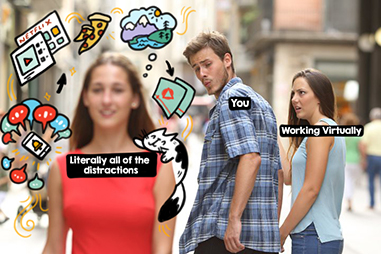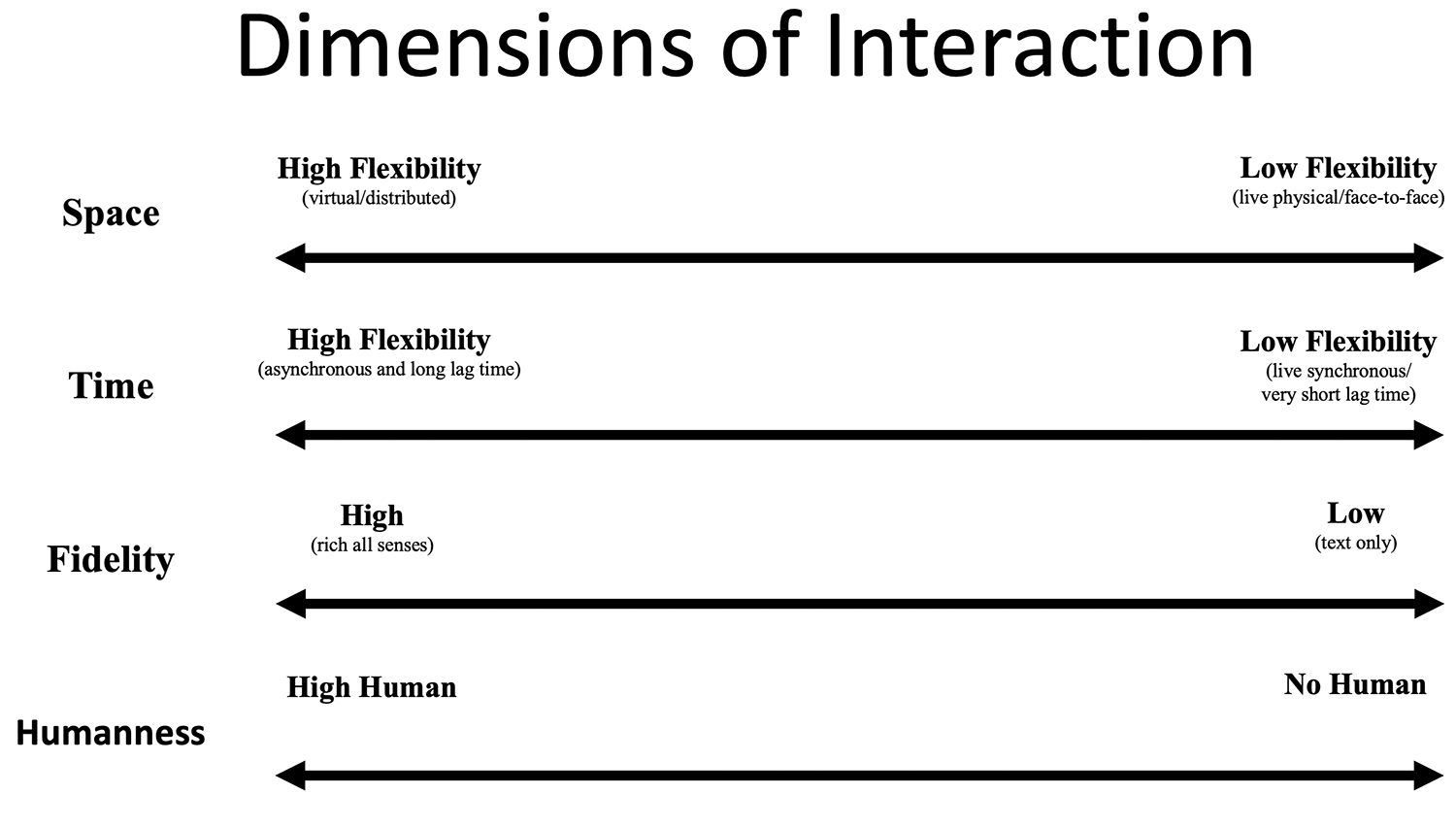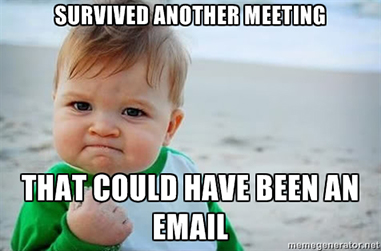Variety in teaching modes can benefit students, and paying attention to the transitions is as important as choosing the best mode for learning activities.

This article is part of a series about incorporating asynchronous video into educational activities:
- Unbounded by Time: Understanding How Asynchronous Video Can Be Critical to Learning Success
- Putting Your Best Self Forward: 6 Keys For Filming Quality Videos
- Teacher, Are You There? Being "Present" in Online Learning
- Let's Discuss Discussions: Using Asynchronous Video to Improve Online Discussions
- Improving Problem-Based Learning with Asynchronous Video
- Back to Feedback Basics Using Video Recordings
- The Handoff: Transitioning from Synchronous to Asynchronous Teaching
The United States had been in quite a drought. The American 4×100-meter relay teams have consistently been among the fastest in the world—the men have won the gold medal at the Olympics fifteen times, while second place on the list is shared by the Soviet Union, Great Britain, and Jamaica, all tied at two gold medals. Meanwhile, on the women's side, the United States has won eleven gold medals, with East Germany next on the list with two. In addition, the United States men's team has medaled at all but seven Olympics.Footnote1
But for twelve years, the United States had, astonishingly, been denied victory at the world stage. That changed on October 5, 2019, when the U.S. men's team finally ended the drought and claimed the gold at the world championships in Doha, Qatar.Footnote2
But even then, it almost did not happen. In their qualifying heat, the United States botched two handoffs, the second of which was so poor that the team was very nearly disqualified. Anchor leg Noah Lyles had to push to keep the United States qualified for the final.
"I don't know…the timing was off. I hope we got in," Mike Rodgers told NBC Sports as the team anxiously awaited review to see if their final handoff was completed before the end of the handoff zone.
The U.S. men's team was strong. They were prepared. But a poor transition from one part of the race to another nearly destroyed their momentum. Similarly, in teaching, teachers and students generate a momentum that propels the class effectively forward in learning. A change in modalities, however, can disrupt this momentum, causing students to disengage from the course or slowing the rate of learning as information is lost from one part of the course to another. This is particularly a concern in online learning where all of the communication happens via technology.
However, teaching all of the course in a single modality—for example, either completely through text-based discussion, videoconferencing, or asynchronous video—is also problematic. Variety can help students stay engaged, but moving from one part of the course to another carries a risk of poor handoffs. How can instructors effectively combine these different technologies and modalities in their teaching?
Know the Strengths of Each Modality
The first key strategy for teaching with multiple media is to understand the strengths and weaknesses of each. For example, with its increased fidelity or detail provided, video can be better at establishing connection, whereas text can be better for well-argued responses to questions. Synchronous technologies (such as live conversations or videoconferences) can be better for improvisational conversations, brainstorming, and quickly coming to agreement on a topic. Asynchronous technologies, such as discussion boards or asynchronous video, can be better for measured responses and increased flexibility for class members who are not located in the same physical space. Good instruction is more than just understanding the content of a course—it involves understanding how to best communicate that content to others, and the best option can vary depending on the subject, class objective, and the students involved.
Transition the Discussion from One Modality to Another
In my living room, there is a very small gap between the carpet and the laminate flooring. This gap is only one centimeter wide, and yet the exposed pins have caused enormous irritation to us walking barefoot in our home! The lesson? How we transition from one space to another matters a great deal in how well we enjoy those spaces. The same is true online, as care should be provided in how the course transitions from one online space to another. Here are a few suggestions to take advantage of the ebb and flow between online spaces with minimal disruption:
- Spend the time to design your course well in your learning management system (LMS). Try to provide all the links to all of the online discussion spaces within one place so students are not scrambling to find where they should go.
- Have a clear purpose for each discussion or interaction. Open-ended discussions in which students can "ask me anything they like" or "reflect on anything they find interesting in the reading" are useful sometimes, but often they become unfocused and feel like a waste of time for students. Thus, these discussions are often best offered as optional activities, office hours, or study sessions. More effective for required interactions are specific prompts such as "Jones and Smith mentioned X. How have you seen evidence for X in your own life?" or "How does their explanation of X further explain what we read last week about Y?"
- Clearly communicate the purpose. Because you are designing each interaction with a clear purpose, it is often helpful to tell students what that purpose is. If they understand why the asynchronous video or text discussions are important, for example, they may be more likely to stay engaged.
- Be clear with students about which learning spaces begin a conversation and which ones end it. For example, in one of my classes, we begin the week with a synchronous videoconference in which I introduce the coming topics for the week and frame the discussion. The class discussion then continues asynchronously through text discussions using online social annotation tools as the students complete the readings. We then end the week with an asynchronous video discussion in which students respond to reflection questions that draw upon all of the week's learnings. Then, the following week, we begin our synchronous video conversation by recapping the discussion from the previous week, answering any questions that were never resolved asynchronously, and highlighting the key points of the discussion. This provides some closure to the discussion from the previous week and helps students know that questions they raise asynchronously will be addressed, either in the text discussions, the asynchronous video discussion, or the videoconference.
- A chronological view within an LMS is often helpful for students, enabling them to move step by step through the assignments for the week and know which activities begin or continue which discussions (see figure 1).
- Alert students to what work should be completed before, during, or after a class discussion. For example, you might ask students to complete the readings before participating in the asynchronous video discussion; or you could ask them to bring unfinished work to a synchronous session so they can raise concerns with the group. You might ask during a videoconference for students to record asynchronous responses to the day's discussion, or you might ask them in discussion boards to brainstorm ideas that will be discussed later through video. By reflecting on what you want students to do before, during, and after their interactions with you, you are also reflecting on what you see as the purpose for every activity, which will help you prepare better learning activities.
- Having a consistent rhythm for the class is usually helpful for students. For example, students appreciate having synchronous sessions at the same time each week and having the same window of time for responses to asynchronous discussions.
- Establish expectations for interactions between students. Asynchronous discussions can feel like "shouting into the wind" if people do not return to read or "hear" the comment and respond. Thus, an important approach is to develop class norms about when people will provide the first post and when (and how often) they will return to participate in responses.

Use Higher-Fidelity Technologies Earlier to Establish Social Presence

Some of the ways we communicate are richer and deeper than other modes of communication in how they engage us. For example, do you yourself more easily distracted in an in-person conversation or in a videoconference? What about in an email correspondence?
The more that all of our senses are engaged in the process of understanding and perceiving others, the more potential there is for our engagement, which also increases the likelihood of feeling a sense of connection, understanding, and trust with each other.
In discussing various ways we can facilitate online or blended learning, Charles Graham referred to these spaces as having four dimensions: space, time, fidelity, and humanness (see figure 2).Footnote3 A "traditional" in-person class, for example, is limited in both space and time—the class meets at the same time and at the same place each week. However, it has high fidelity, as we can see, hear, touch, and even smell each other. This makes us seem more "human" to each other, and we feel a greater ability to relate to each other as people rather than as names or avatars.

In general, in-person teaching has more fidelity than online teaching and video has more fidelity than text. This is, of course, a general statement with plenty of exceptions—for example, an immersive experience watching a movie in a theater can have higher fidelity than watching an elementary school play from the back of a gym where you cannot hear or see very well. The point is that some learning experiences have higher fidelity than others, and higher fidelity is usually helpful in establishing relationships and norms. For this reason, often the best strategy is to schedule these higher-fidelity experiences at the beginning of the course. For example, many online programs require students to attend an in-person retreat at the beginning of their studies. Similarly, many effective teachers begin their courses with in-person class sessions before moving online—or at least begin with synchronous video sessions before moving to asynchronous discussions. Holding higher-fidelity sessions at the end of the course can also help bring closure to the human experience the students and instructor had together in the course.
Use More Efficient Technologies Later to Complete Projects

Depending on the task, higher-fidelity media tend to be comparatively inefficient. How many meetings have you sat through and thought "This could have been an (asynchronous) email"? Perhaps the takeaway is this: When the goal of the activity is to efficiently complete straightforward tasks or communicate information that is easily understood, select a medium that emphasizes flexibility and focuses the communication to a point. When the goal is to develop relationships, increase connection and engagement, or brainstorm and problem solve, select a medium with greater fidelity.
Be Aware of and Sensitive to Students' Needs
This article ends with a big "but," which is, above all, we need to understand and know our students' needs. Less flexible learning environments may have higher fidelity, but pay attention to whether the lack of flexibility excludes some learners from participating. If it does, we may be perpetuating and extending systemic prejudices that prevent some groups of students from succeeding to the same degree as others. For example, even though in-person meetings can build relationships, they can exclude the mother with young children at home, the working professional unable to leave work, or the international student working in the middle of the night to participate. Synchronous videoconferences can provide the back and forth of conversation unless some participants have poor internet access or no access at all.
In addition, even in perfectly equitable learning conditions, there is great variety in how students engage with various media. Introverted students often prefer asynchronous settings in which they can compose their thoughts before posting. However, extroverts may find this tedious and prefer synchronous settings where they can "think out loud." International students often can read a non-native language better than hear it and, as a result, can better participate in text-based discussions. Sometimes, the difference comes down to just a simple learning preference. For example, I like to listen to conversations while standing or doing something routine like housework because it helps me focus.
Know Your Students, Know Your Technology
All of this means that the best answer needs to be personalized to your teaching situation. Within that truth lie a few key conclusions:
- Instructors should seek to understand the strengths and weaknesses of various communication technologies and thoughtfully consider which to be most effective for each learning activity.
- Instructors should pay attention to the transitions from one modality to another so that students understand where they are supposed to go for a discussion and why.
- Variety can be helpful, as it can enable students with different learning preferences to participate in the ways they find most comfortable.
- Be aware of students' needs and provide alternative ways for students to participate in a conversation if needed.
Oftentimes compromises must be made between flexibility, equity, and fidelity. Recently, asynchronous video has emerged as one technology that may hold great promise as an educational method that can be both flexible and higher in fidelity than text-based discussions. It may not be the right answer for every teaching scenario, but it could be another arrow in the quiver for instructors.
Acknowledgment
This series of articles was written with the support of EdConnect.
Notes
- See 4×100 metres relay at the Olympics, Wikipedia. Jump back to footnote 1 in the text.
- "U.S. Men End 4×100m Relay Drought with First Title in 12 Years," NBC Sports, October 5, 2019. Jump back to footnote 2 in the text.
- Charles R. Graham, "Blended Learning Systems: Definition, Current Trends, and Future Directions," in The Handbook of Blended Learning: Global Perspectives, Local Designs, eds. Curtis J. Bonk and Charles R. Graham (San Francisco: Pfeiffer Publishing, 2006), 3–21. Jump back to footnote 3 in the text.
Richard E. West is Associate Professor in the Instructional Psychology & Technology department at Brigham Young University.
© 2021 Richard E. West. The text of this work is licensed under a Creative Commons BY-SA 4.0 International License.
